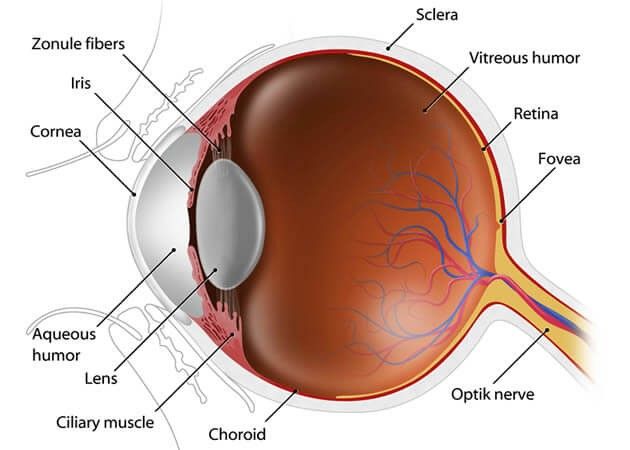Macular degeneration is a deterioration or breakdown of the macula. The macula is a small area in the retina at the back of the eye that allows you to see fine details clearly and perform activities such as reading and driving. When the macula does not function correctly, your central vision can be affected by blurriness, dark areas or distortion. Macular degeneration affects your ability to see near and far, and can make some activities—like threading a needle or reading—difficult or impossible.
Although macular degeneration reduces vision in the central part of the retina, it does not affect the eye’s side, or peripheral, vision. For example, you could see the outline of a clock but not be able to tell what time it is.
Macular degeneration alone does not result in total blindness. Even in more advanced cases, people continue to have some useful vision and are often able to take care of themselves in many cases, macular degeneration’s impact on your vision can be minimal.

What Causes Maular Degeneration?
any older people develop macular degeneration as part of the body’s natural aging process. There are different kinds of macular problems, but the most common is age-related macular degeneration (AMD). Exactly why it develops is not known, and no treatment has been uniformly effective. Macular degeneration is the leading cause of severe vision loss in Caucasians over 65.
The two most common types of AMD are “dry” (atrophic) and “wet” (exudative):
What are the Symptoms of Macular Degeneration?
Macular degeneration can cause different symptoms in different people. The condition may be hardly noticeable in its early stages. Sometimes only one eye loses vision while the other eye continues to see well for many years.
But when both eyes are affected, the loss of central vision may be noticed more quickly. Following are some common ways vision loss is detected:
- words on a page look blurred;
- a dark or empty area appears in the center of vision;
- straight lines look distorted, as in the following diagram.

How is Macular Degeneration Diagnosed?
Many people do not realize that they have a macular problem until blurred vision becomes obvious. Your physician at Catalina Eye Care can detect early stages of AMD during a medical eye examination that includes the following:
- a simple vision test in which you took at a chart that resembles graph paper (Amsler grid);
- viewing the macula with an ophthalmoscope;
- OCT Cirrus Macular Scan.
How is Macular Degeneration Treated?
Nutritional Supplements Although the exact causes of macular degeneration are not fully understood, antioxidant vitamins and zinc may reduce the impact of AMD in some people.
A large scientific study found that people at risk for developing advanced stages of AMD lowered their risk by about 25% when treated with a high-dose combination of vitamin C, vitamin E, beta carotene and zinc. Among those who have either no AMD or very early AMD, the supplements did not appear to provide an apparent benefit.
Deposits under the retina called drusen are a common feature of macular degeneration. Drusen alone usually do not cause vision loss, but when they increase in size or number, this generally indicates an increased risk of developing advanced AMD. People at risk for developing advanced AMD have significant drusen, prominent dry AMD, or abnormal. blood vessels under the macula in one eye (“wet” form).
It is very important to remember that vitamin supplements are not a cure for AMD, nor will they restore vision that you may have already lost from the disease. However, specific amounts of these supplements do play a key role in helping some people at high risk for advanced AMD to maintain their vision. You should speak with your ophthalmologist or optometrist at Catalina Eye Care to determine if you are at risk for developing advanced AMD, and to learn if supplements are recommended for you.
